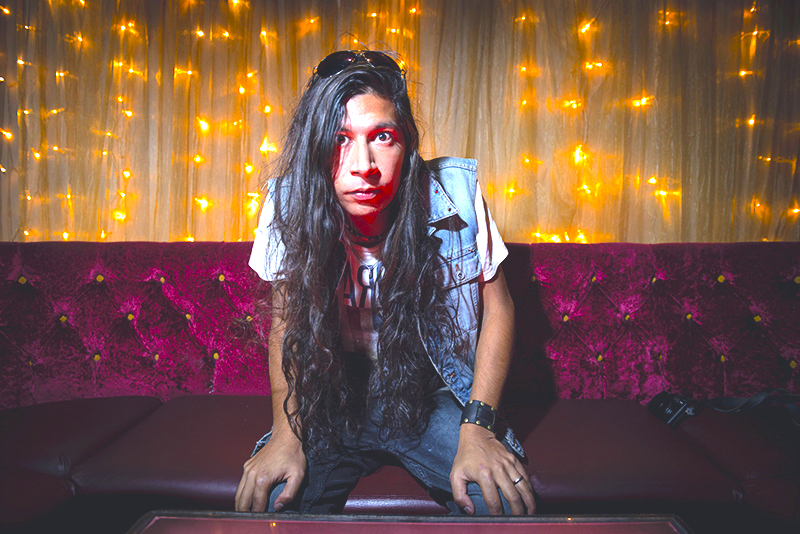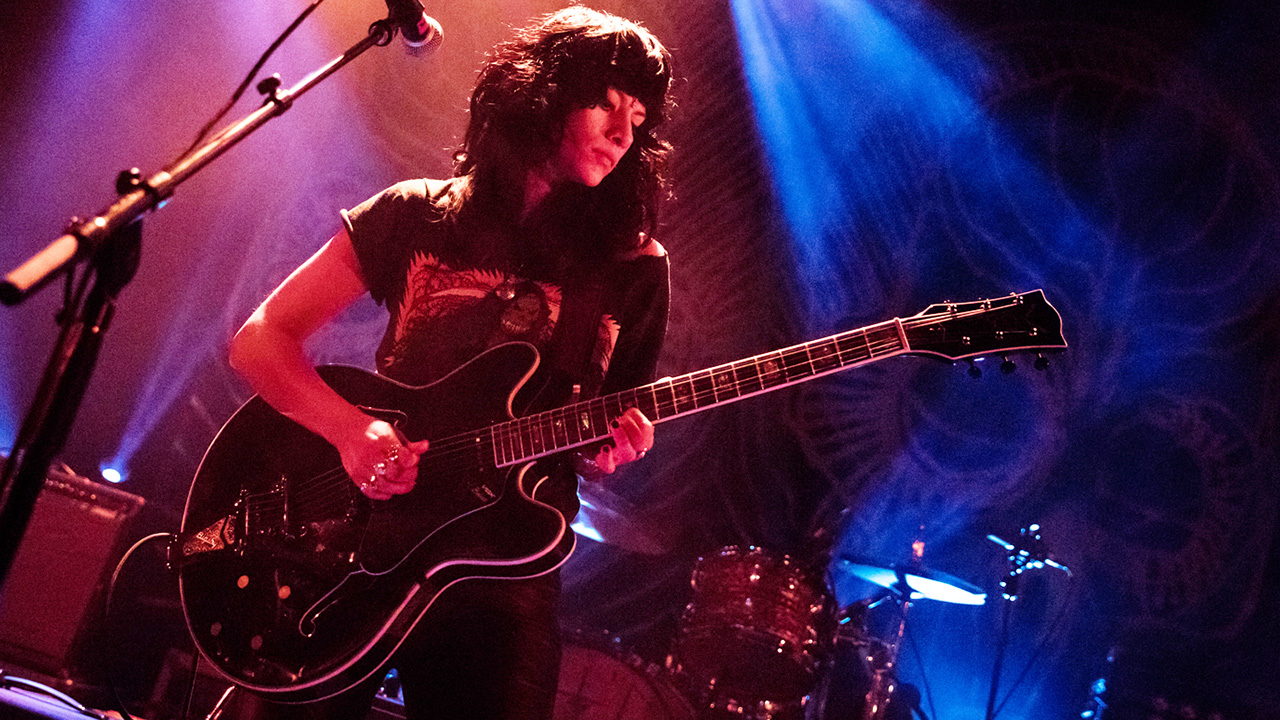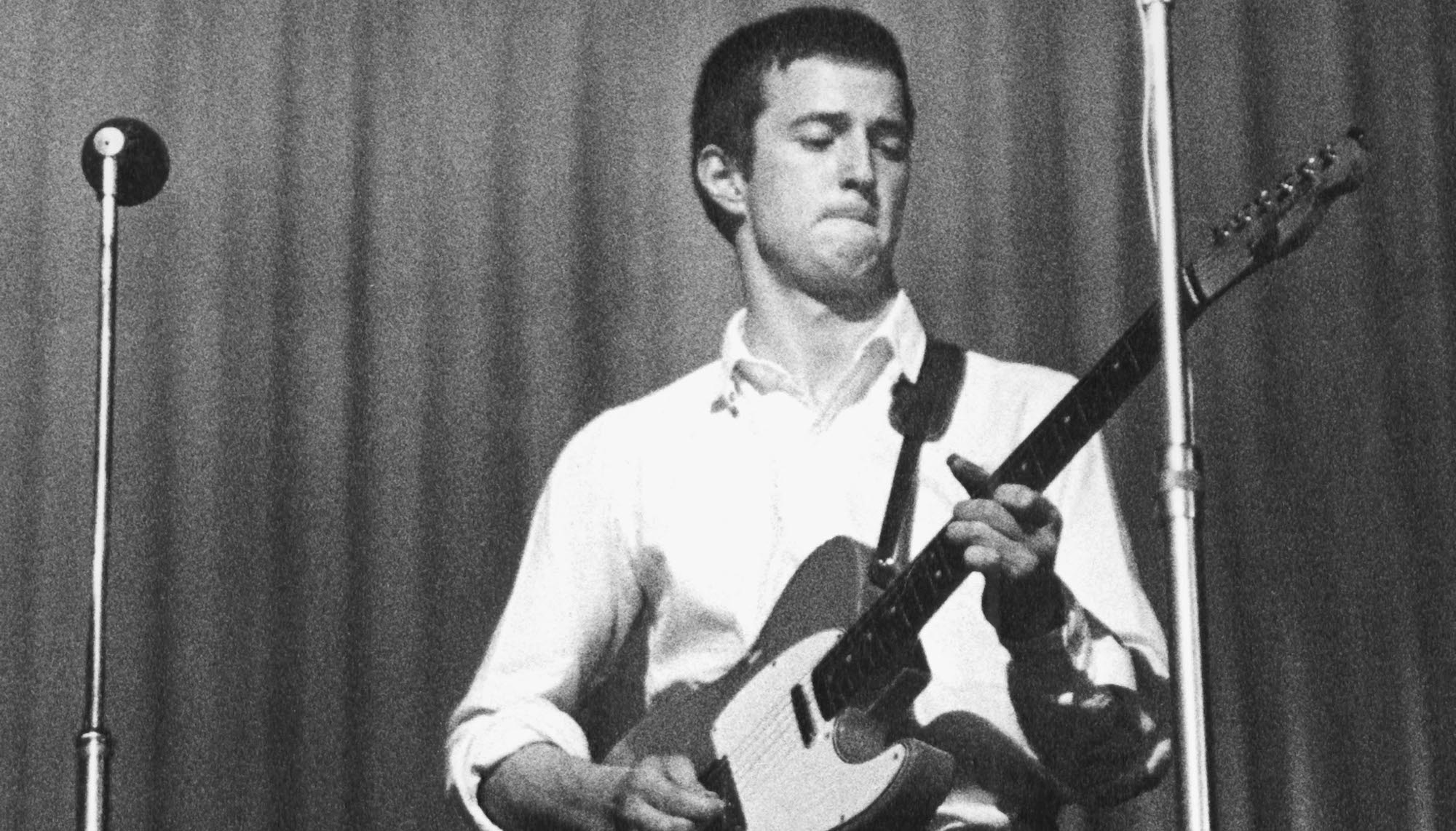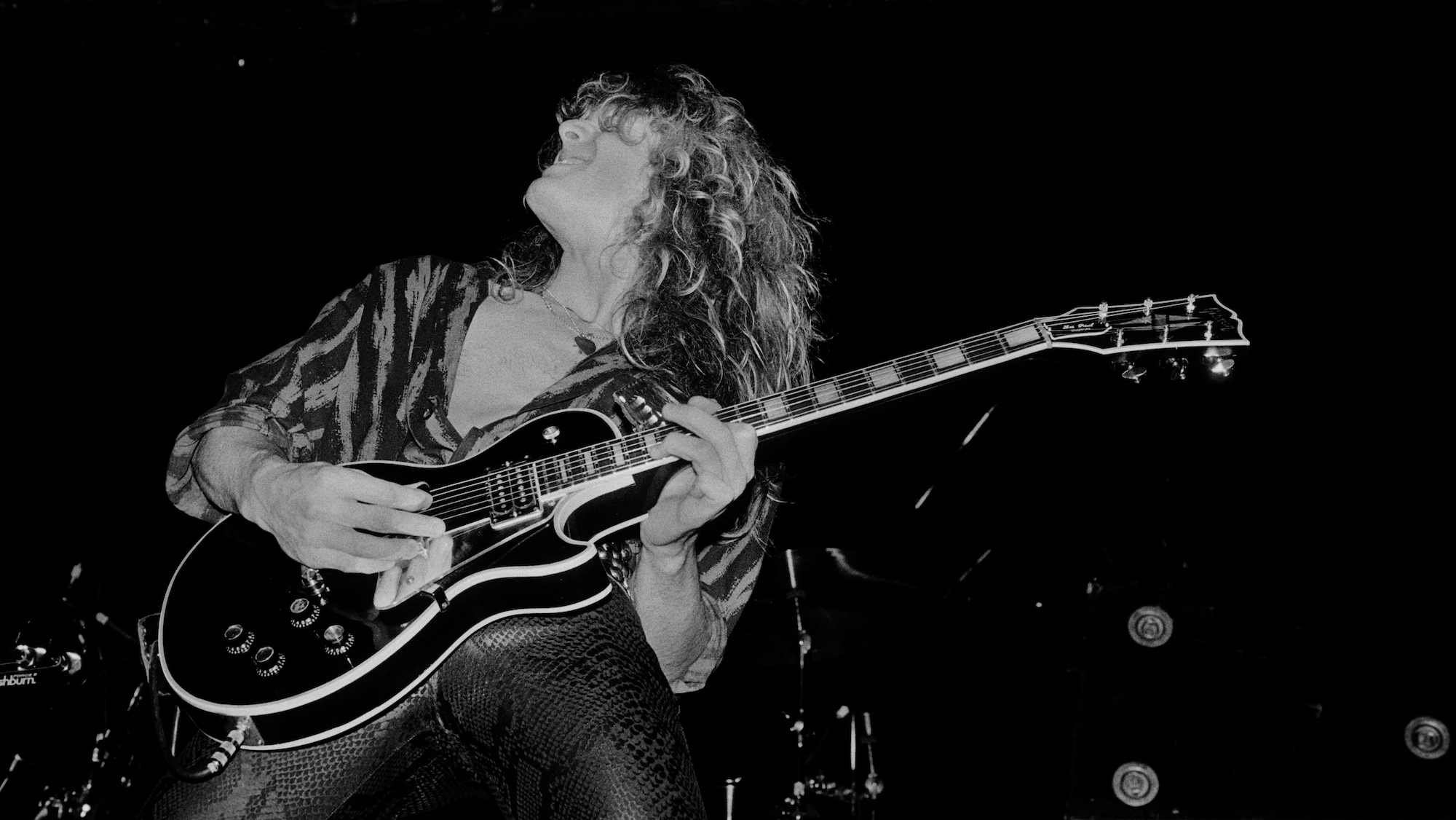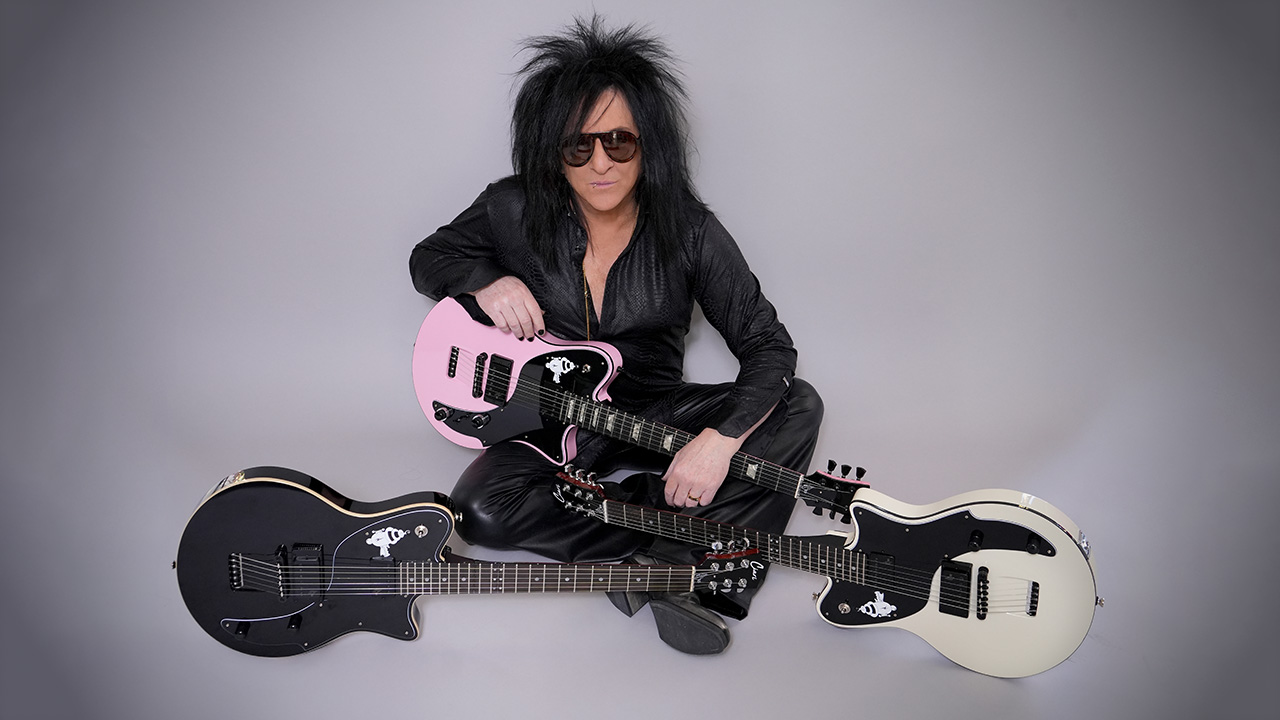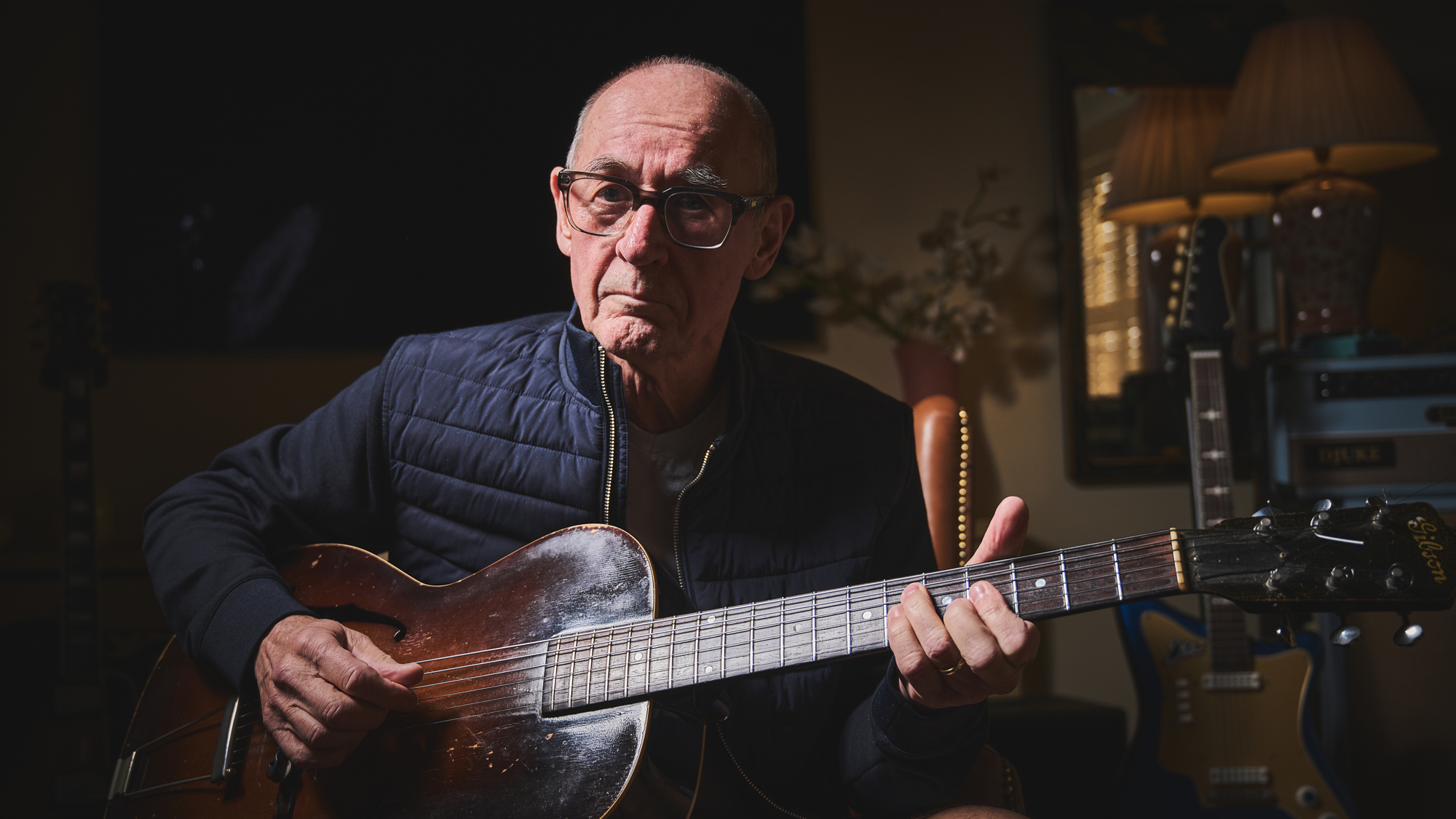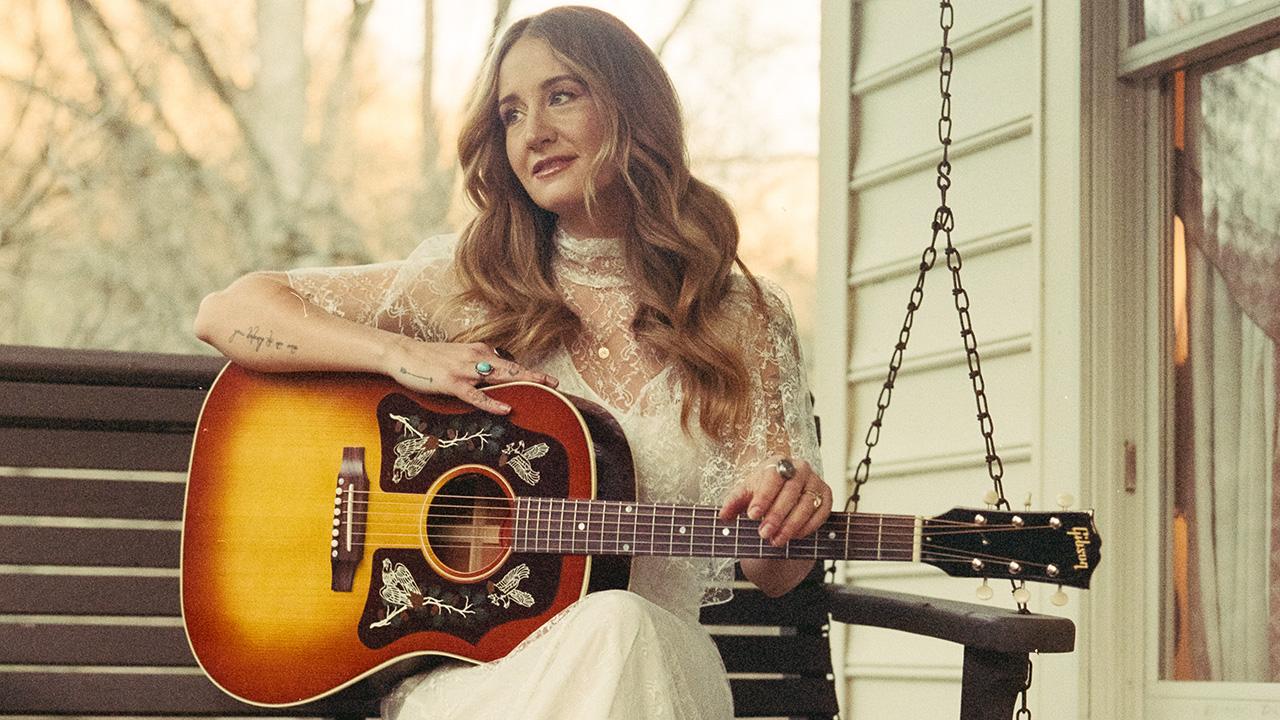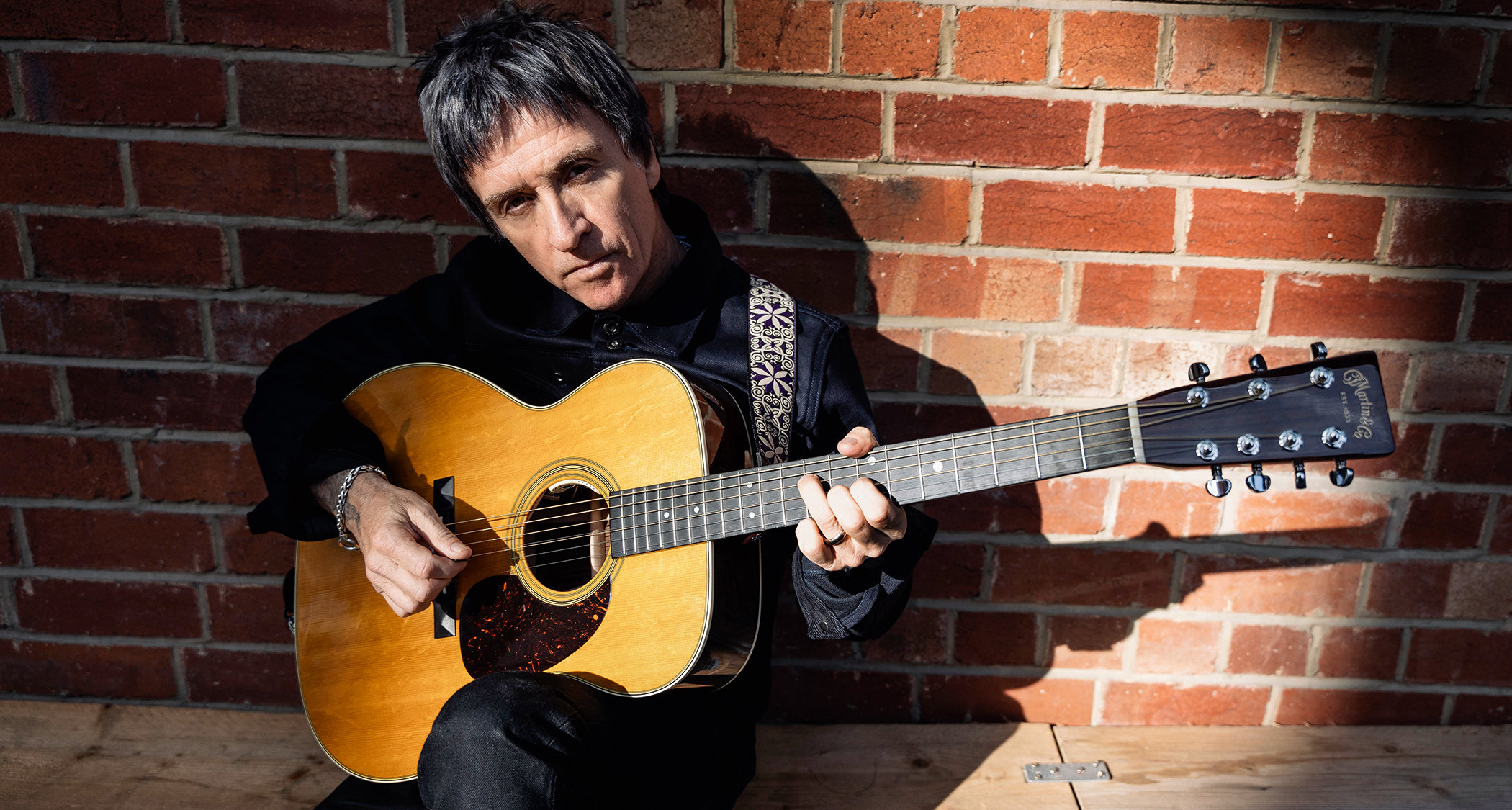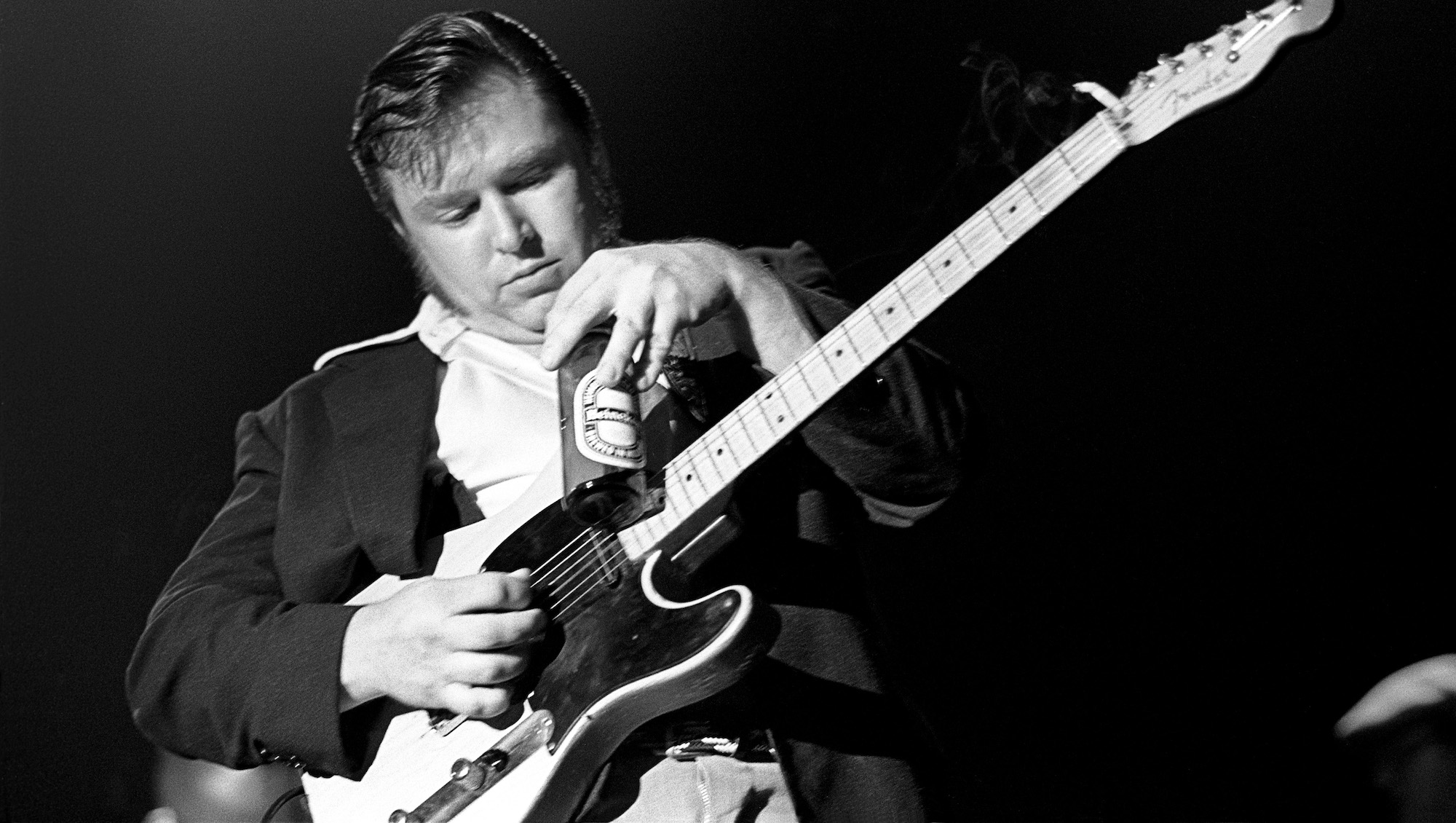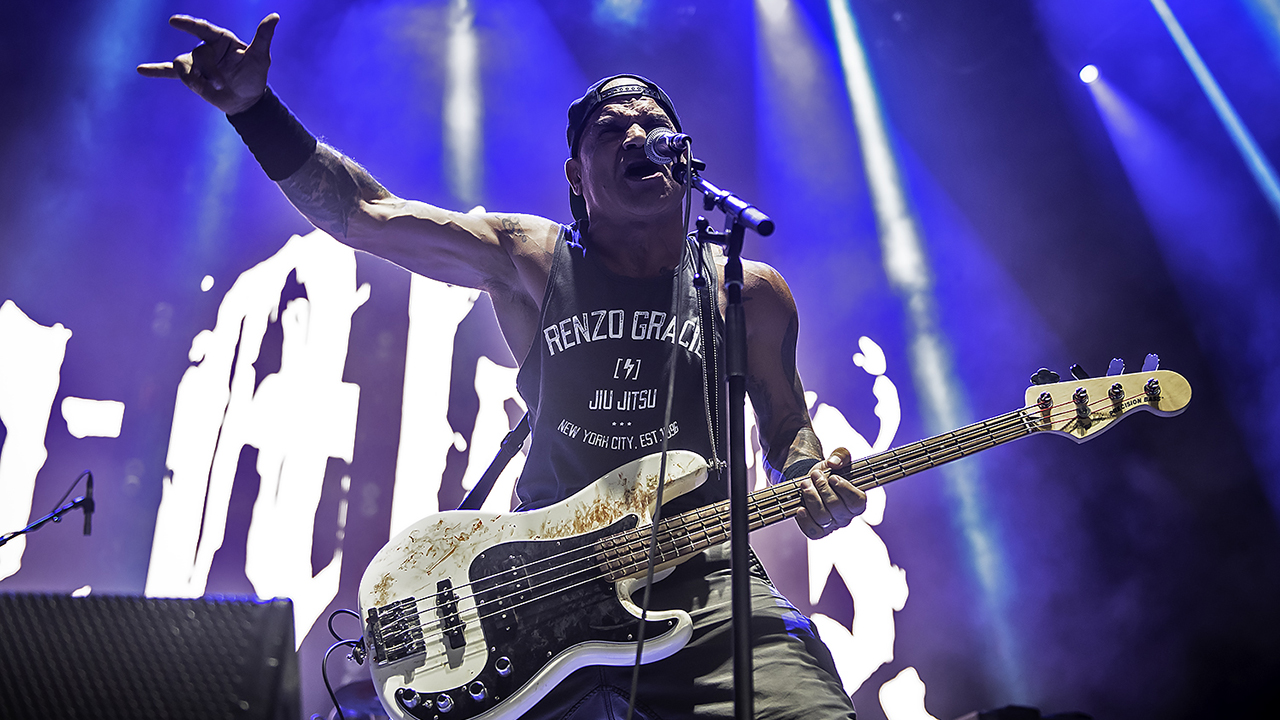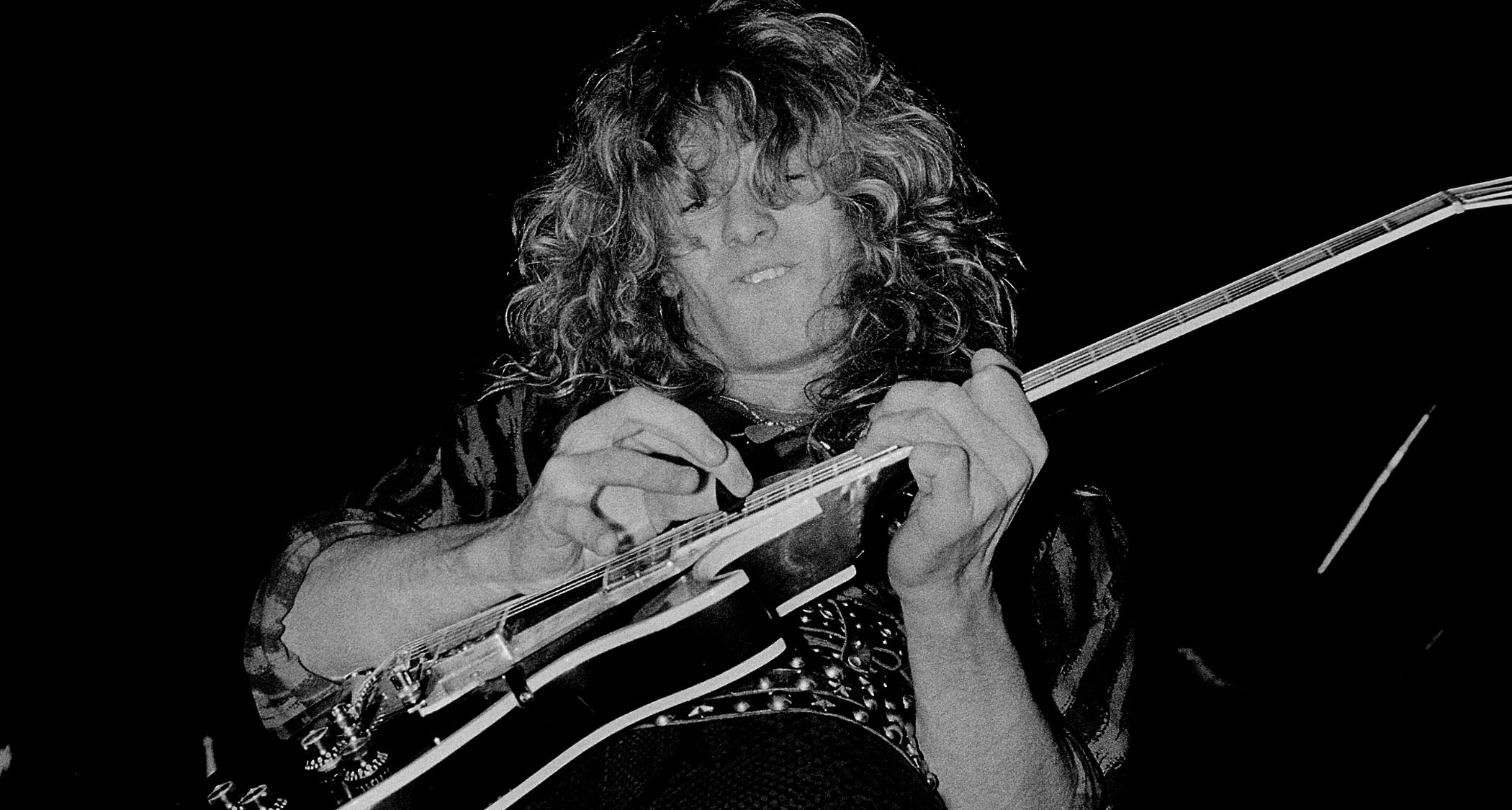“If you’re on stage with Steve Vai, you have to find a way through all the emotions to enjoy the moment”: How Lari Basilio became one of today’s foremost instrumental virtuosos – sharing stages with Joe Satriani, John Petrucci and Lee Sklar along the way
The Ibanez signature artist explains why she makes instrumental music but hardly ever listens to any, where Brazilian music fits in her inspiration, what she loves about her signature pedal and how to develop skills without even knowing it

Lead guitar can be a lifelong struggle between the duality of technique and melody. If too many notes are played, listeners may fail to latch on. But if there are no flickers of excitement, ideas can dissolve into the ether.
Even worse, there’s no one-size-fits-all solution. Every player needs to search deep within, and only through a process of contemplation and reflection are they able to realize their own perfect blend.
Brazilian guitar hero Lari Basilio has given the subject a great deal of thought. You can hear it on her latest record, Redemption, where she dazzles with incredibly soulful and lyrical ideas that build into a fervent storm before simmering down into more pentatonic-led moments of aural beauty.
It’s a rare gift indeed – one born of impeccable dynamic control, taking influence from a wide net of styles and genres, and, most importantly, an ear for the right melodic hooks to accompany each and every chord movement.
“Every time I pick up a guitar, I have to create something new,” Basilio tells GW, speaking from her home where various Laney half-stacks loom in the background. “Of course, everything from technique to theory is important when you’re trying to develop. But the melodies are what people remember – that’s how you make a song interesting and catchy.”
People tend to forget that songwriting needs practice, just like everything else.
“Exactly. It’s easy to think the guitar is just technique, exercises and theory. But composing is actually what it all comes down to, and the more you write, the better you get. If you make sure you’re recording at least one idea every time you pick up a guitar, you’ll be developing in ways you might not even know about.”
Get The Pick Newsletter
All the latest guitar news, interviews, lessons, reviews, deals and more, direct to your inbox!
A new finish for your Ibanez signature was launched at NAMM… congrats!
“We just released the new black version. I love that guitar so much – it’s the only instrument I ever need. My signature Seymour Duncan pickups make it even more versatile, because they have the dyna-MIX9 system. I run that into my Laney Lionheart, which is my favorite amp. But I also like the Ironheart for heavier tones; it’s so well-defined, so I use that, too.”
Last year you launched your own Violet distortion with JHS Pedals. The midrange control before the distortion circuit is a clever way of shaping your sound.
“Josh Scott is a genius. I told him I wanted more of an authentic kind of distortion. I explained the sound I was looking for and how important the mids are to me. He did such an amazing job.
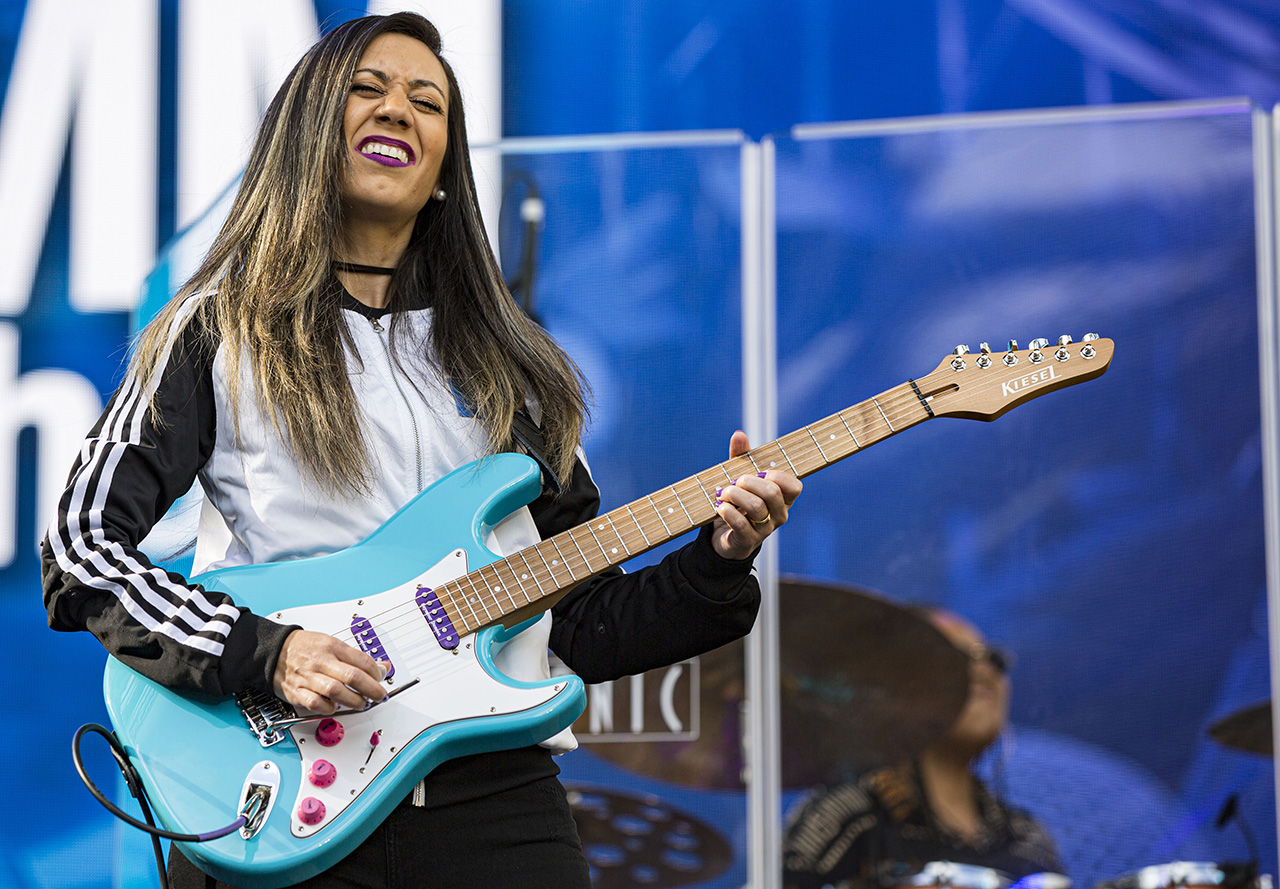
“I’m actually running two Violets on my pedalboard right now. One is set as a distortion, and the other runs like an overdrive – but only with the tiniest bit, so I can make a funk part ever so slightly dirty.”
Your new album Redemption will be arriving later this year. What feels different about this latest batch of songs?
“One thing I always try to focus on is melody. I seem to be more of a melodic player at heart. There’s always an evolution from album to album, especially from a songwriting point of view. I’m always maturing in that sense – and the same goes for production. This time I wanted a really modern sound.”
You teased the track Seven in 2021. It’s interesting to see what you get up to with a seven-string in your hands.
“Yeah! That Ibanez AZ model sounded great and felt great. I’ve always been into heavy music and I love mixing that against the ballads I write. Another new thing is the solo instrumental at the end, which is called Forever. It’s something I’ve always wanted to do – one song that was just guitar.”
You come from the Satriani/Timmons school of guitar playing, but you have Brazilian influences, too.
“I have my main influences like Joe and Andy, who know how to tell a story and make the listener understand the message behind the music. It’s all about completing the idea they started out with, and they always manage to do it.

“Then there are some influences from Brazil, like Juninho Afram. He’s from a band called Oficina G3, who I grew up listening to. He’s another melodic player – he’s technically incredible, but knows when to use that stuff. It’s more about feel, with very distinguished bends and vibrato. That’s what makes a player special in my eyes.
“Then there’s Kiko Loureiro, famous for his work in Angra and Megadeth. Another player I love is Edu Ardanuy, who is phenomenal in a different way. All three played a big role in how I turned out.”
Joe told me how he liked his guitar to sound and how he was going to approach the solo
You’ve collaborated with Satriani, shared the stage with Vai and been invited to Petrucci’s guitar camps. What have you learned from these experiences?
“When I had Joe guest on my song Glimpse of Light, we started exchanging a few emails and discussing tones. He was telling me how he liked his guitar to sound, then he told me about how he was going to approach the solo.
“It was good to hear his perspective. He put so much into his parts. I’m always trying to learn, and I have to say Joe is one of the most inspiring people you can be around.
“The same goes for John Petrucci, who invited me to be part of his camp two years ago. I got to hang out with him and his wife Rena, who’s an amazing player as well. I also had a chance to watch a Dream Theater show in Thailand and it was incredible. His guitars sounded so big!”
It must have been quite scary being on stage with Vai, though.
“If you’re on stage with Steve Vai, you have to find a way through all the emotions to enjoy the moment. It goes by very fast. It’s the same feeling I get when I have players like Vinnie Colaiuta or Leland Sklar on my albums. I’m humbled by their presence – they’re living legends.
“I love hearing their stories. Every time we plug in together, I grow as a player. Everything they touch turns to gold because whatever they play comes with so much personality.”
You covered Michael Jackson’s Man In The Mirror back in 2019. How do you go about putting your own spin on such a famous piece of music?
“When I wrote that arrangement, of course I wanted to leave my fingerprint on it – but it’s delicate. It’s one of the most famous pieces Michael recorded.

“On top of that, I had someone who co-wrote the track, Siedah Garrett, singing on my version. I was honored that she liked my arrangement. I tried not to feel the pressure too much; it was about letting my own style flow through the arrangement.
“Fingerstyle is fun for me – it makes me play different. And I also used drop D for that. It brought an interesting feel to the chords and ghost notes. It was a combination of the tuning, the rhythms and the fingerstyle touch that made it work so well, I think.”
It might surprise people that I love Avenged Sevenfold… Synyster Gates is an amazing player
It’s amazing that it doesn’t sound like drop D in the classic sense. Where did the fingerstyle inspiration come from?
“Hybrid is something I rarely do; I either use my pick or switch to pure fingerstyle. It all comes from how I learned. I started out on organ and then my dad showed me a few chords on acoustic. He didn’t give me a pick so I had to use my fingers.
“And maybe there’s a Brazilian influence there, too. We have so many amazing fingerstyle players like Yamandu Costa, so that probably helped. Later on, I realized using my fingers instead of a pick gave me access to many more tones and increased my dynamic range.

“I don’t study Brazilian rhythms that much, but I’ve been exposed to so much of it that it’s a natural part of me. There are a few things in our culture that seem to just come with us; we don’t even need to think about it.”
Are there any influences you don’t talk about much that would surprise us?
“To be honest, I’m a terrible listener – I don’t really listen to instrumental music! I don’t even know why I make it. Just kidding! It’s what comes out naturally when I write, I guess.
“It might surprise people that I love Avenged Sevenfold; I listened to them a lot growing up. I have to say Synyster Gates is an amazing player. It’s very easy to see why he ended up inspiring a lot of people.”
- Redemption will be released in the near future – watch Basilio’s website for details.
Amit has been writing for titles like Total Guitar, MusicRadar and Guitar World for over a decade and counts Richie Kotzen, Guthrie Govan and Jeff Beck among his primary influences as a guitar player. He's worked for magazines like Kerrang!, Metal Hammer, Classic Rock, Prog, Record Collector, Planet Rock, Rhythm and Bass Player, as well as newspapers like Metro and The Independent, interviewing everyone from Ozzy Osbourne and Lemmy to Slash and Jimmy Page, and once even traded solos with a member of Slayer on a track released internationally. As a session guitarist, he's played alongside members of Judas Priest and Uriah Heep in London ensemble Metalworks, as well as handled lead guitars for legends like Glen Matlock (Sex Pistols, The Faces) and Stu Hamm (Steve Vai, Joe Satriani, G3).
You must confirm your public display name before commenting
Please logout and then login again, you will then be prompted to enter your display name.
“I suppose I felt that I deserved it for the amount of seriousness that I’d put into it. My head was huge!” “Clapton is God” graffiti made him a guitar legend when he was barely 20 – he says he was far from uncomfortable with the adulation at the time
“I was in a frenzy about it being trapped and burnt up. I knew I'd never be able to replace it”: After being pulled from the wreckage of a car crash, John Sykes ran back to his burning vehicle to save his beloved '76 Les Paul

